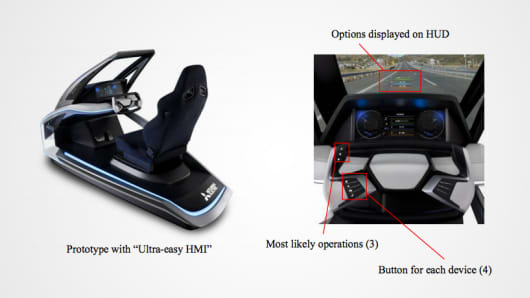
The Mitsubishi Outlander Sport was ranked as the most toxic vehicle base on chemical testing of the interior.
Love that new car smell? Well, it doesn’t love you back, according to a new study of toxic materials released by the flame retardants and plastics that sometimes coat the interior parts of a car.
The study by Ecology Center, an Ann Arbor, Mich.-based environmental organization, found the Mitsubishi Outlander Sport was the "most toxic" vehicle among more than 200 popular 2011 and 2012 vehicles tested for group's annual list.
The car's interior was found to contain bromine and antimony-based flame retardants in the seating and center console, chromium treated leather, and seats containing large amounts of lead. Who’s up for a road trip now?
Mitsubishi was not immediately available to comment.
On the other end of the spectrum, the 2012 Honda Civic ranked as the "least toxic" model with an interior (including fabrics and trim) that’s completely devoid of both bromine-based flame retardants and PVC. It also has “low levels of heavy metals and other metal allergens.” The 2011 Toyota Prius and 2011 Honda CR-Z ranked as Nos. 2 and 3 on the least toxic side of the ledger.
Overall, Ecology Center has rated Honda as the top automaker with respect to healthy car interiors every year since 2007, while Hyundai-Kia was ranked the lowest during the last two years, according to the study.
The Ecology Center says the fumes that create the new-car smell that so many people find pleasant actually come from a chemical cocktail of bromine, chlorine, lead and other heavy metals used in automotive interiors.
“Since these chemicals are not regulated, consumers have no way of knowing the dangers they face," said Ecology Center research director Jeff Gearhart in a statement. "Our testing is intended to expose those dangers and encourage manufacturers to use safer alternatives.”
Its report, Toxic at Any Speed, says that driver and passenger exposure to these materials has been linked to allergies, birth defects, liver toxicity and cancer, and says the linkage is corroborated by a two-year study conducted by Commonwealth Scientific and Industrial Research Organisation, Australia’s national science agency.
The potential toxicity of automotive interiors hasn't received much attention from the U.S. Environmental Protection Agency, although the U.S. agency does acknowledge the phenomenon of harmful building materials. A separate study from the Technical University of Munich in Germany conflicted with Ecology Center's findings, showing that the compounds in “new car smell” weren’t toxic but could aggravate allergies in some people.
Either way, the amount of plastics used in vehicles grew from 22 pounds in 1960 to over 250 pounds today, according to the group's website, HealthyStuff.org, although some 17 percent of new vehicles now have PVC-free interiors, and 60 percent are produced without bromine-based flame retardants in the interiors.
HealthyStuff.org says that it “only tests for a limited set of chemical hazards."







